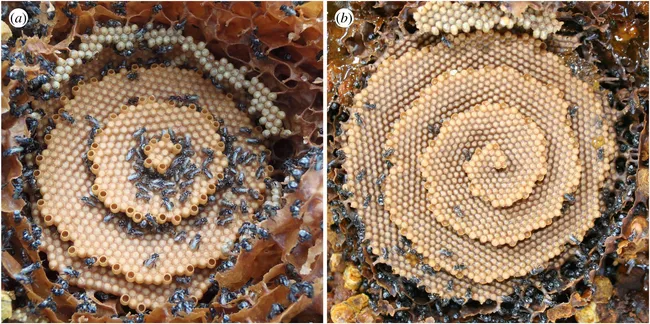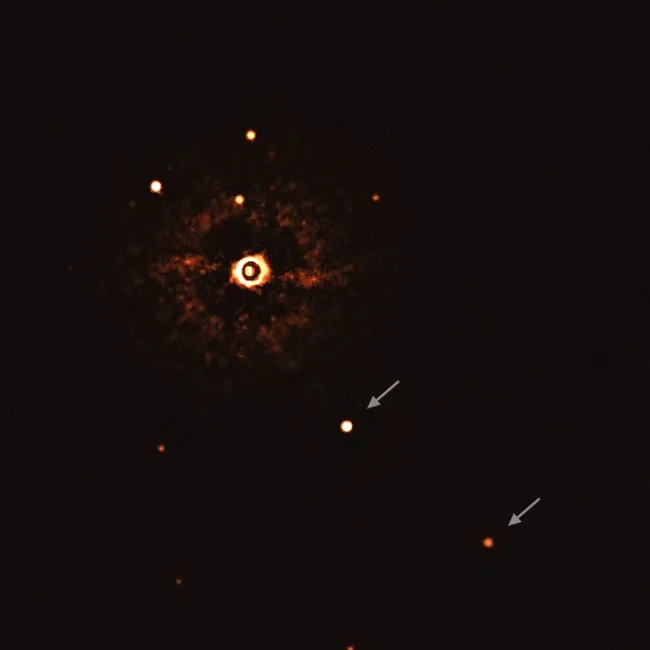Everything is a bit different in Australia, is it not?

Gassho, J
STLah
Strange, spiral bee combs look like fantastical crystal palaces. Now we know why.
These Australian bees might be following the same rules that crystals use to grow.
In a world of bland hexagonal honeycombs, a small group of rebellious Australian bees has chosen to build spiral staircases.
Meet the bees of the genus Tetragonula. These Aussie pollinators have no stingers, but make up for their defensive deficiencies by building mesmerizing fortresses of wax whose beauty has long captivated the Internet.
These spiral structures are actually giant, swirly nests called "brood combs." Each little circular cell is an egg chamber, built by a wax-secreting worker bee, provisioned with regurgitated food by a nurse bee, then filled with an egg by the queen herself. When one cell is done, workers move on to the next one, building outward and upward in a spiral pattern that can sometimes reach 20 stories tall, Tim Heard, an entomologist with The Commonwealth Scientific and Industrial Research Organization (CSIRO) in Australia, previously told Live Science.
... "These combs follow the same basic rules that cause crystals to grow up in a spiral pattern," study co-author Julyan Cartwright, a researcher at the Spanish National Research Council (CSIC) who studies mathematical patterns in nature, told Live Science. "Each bee is basically following an algorithm."
https://www.livescience.com/tetragon...-crystals.html
These Australian bees might be following the same rules that crystals use to grow.
In a world of bland hexagonal honeycombs, a small group of rebellious Australian bees has chosen to build spiral staircases.
Meet the bees of the genus Tetragonula. These Aussie pollinators have no stingers, but make up for their defensive deficiencies by building mesmerizing fortresses of wax whose beauty has long captivated the Internet.
These spiral structures are actually giant, swirly nests called "brood combs." Each little circular cell is an egg chamber, built by a wax-secreting worker bee, provisioned with regurgitated food by a nurse bee, then filled with an egg by the queen herself. When one cell is done, workers move on to the next one, building outward and upward in a spiral pattern that can sometimes reach 20 stories tall, Tim Heard, an entomologist with The Commonwealth Scientific and Industrial Research Organization (CSIRO) in Australia, previously told Live Science.
... "These combs follow the same basic rules that cause crystals to grow up in a spiral pattern," study co-author Julyan Cartwright, a researcher at the Spanish National Research Council (CSIC) who studies mathematical patterns in nature, told Live Science. "Each bee is basically following an algorithm."
https://www.livescience.com/tetragon...-crystals.html

Gassho, J
STLah



 ... I feel it is an achievement of the world
... I feel it is an achievement of the world  )
)  )
)
Comment